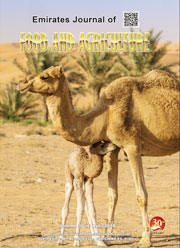INFLUENCE OF NITROGEN FERTILIZATION ON CHEMICAL COMPOSITION OF CULTIVATED NETTLE
DOI:
https://doi.org/10.9755/ejfa.2015-04-089Keywords:
harvest term, mineral content, bioactive compounds, nitrophilous plant, Urtica dioicaAbstract
Stinging nettle (Urtica dioica L.) is a medicinal and edible plant species with a high economic potential. In most European countries nettle is still not produced commercially but is collected from natural habitats. This plant requires large amounts of nitrogen for its improved growth and satisfactory yield, which can result in accumulation of harmful nitrates and reducing of raw material quality. Mentioned problems can be solved by controlling the amount of nitrogen through fertilization, i.e. introduction of stinging nettle into agricultural production. The aim of this study was to determine the effect of three nitrogen fertilization doses (0, 100 and 200 kg ha-1) on the chemical composition of cultivated nettle in the second year of growing. The harvest of the nettle for consumption in fresh form was carried out before flowering and six harvests were performed. It was found that cultivated nettle is a valuable source of potassium [2.27% K dry weight (dw)], calcium (5.21% Ca dw) and iron (2765 ppm dw). Fresh nettle herb contained high amounts of ascorbic acid [63.75 mg 100 g-1 fresh weight (fw)] and total phenols (732.49 mg GAE 100 g-1 fw), correlated with its high antioxidant capacity (1936.58 mM Trolox L-1 fw). The highest nitrogen dose (200 kg ha-1) increased the content of crude protein and calcium, however resulted in higher nitrate content and lower values of dry matter, iron, total phenols and ascorbic acid. Therefore, fertilization with 100 kg N ha-1 could be recommended in production of nettle with a high nutritional value.










 .
. 